Can cooling towels really lower your body temperature?
I took them on runs, to the beach, and to Reviewed labs to test their chill.
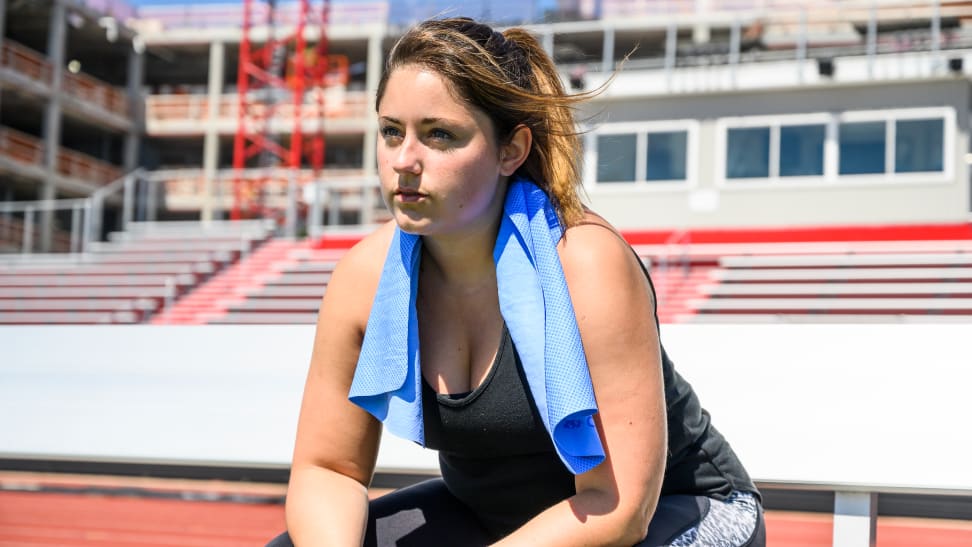 Credit:
Reviewed / Betsey Goldwasser
Credit:
Reviewed / Betsey Goldwasser
Products are chosen independently by our editors. Purchases made through our links may earn us a commission.
As a personal trainer, avid runner, and editor at Reviewed, I have a vested interest in any product marketed for working out. Self-cooling towels first crossed my radar a couple of years ago (at Home Depot, of all places). I got it, I used it once or twice, but didn’t like the experience. For these towels to work, they must be dampened, and I don’t like the sensation of running with a wet, floppy towel around my neck. This summer, however, I trained for a triathlon, which required many grueling running and biking and swimming workouts (sometimes one right after another), with longer sessions ending as temps climbed into the 90s. I needed relief. And maybe I’d find it from a cooling towel.
What is a cooling towel and how does it work?
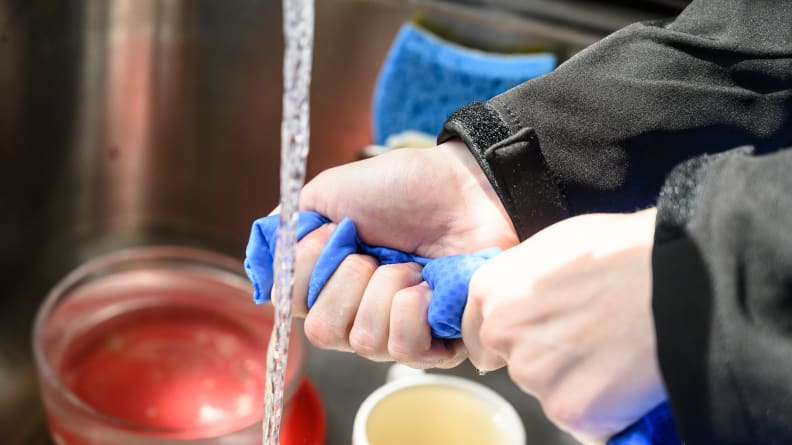
To "activate" a cooling towel, you wet it with cool water and wring it out.
Cooling towels are made from one of two types of synthetic materials. The first is a plastic-y material (PVA, or polyvinyl acetate) not unlike a chamois cloth you’d used to clean your car or to soak up spills, a la that early 2000s infomercial. When it’s wet or damp, it’s spongy and malleable. When it’s bone-dry, it’s stiff and cardboard-like. The second is a microfiber mesh that feels soft, light, and fabric-like whether wet or dry.
Both materials employ the concept of “evaporative cooling,” which is a fancy way to describe the chilling sensation felt when water evaporates into the air—or precisely what the process of sweating does for our skin. Moisture from the surfaces of these towels supposedly evaporates at a faster rate, which heightens the cooling feeling on skin.
To find out if these claims hold water (or, really, release it faster), we purchased the top-reviewed cooling towels on Amazon: Chill Pal PVA Cooling Towel, Frogg Toggs Chilly Pad Cooling Towel and Alfamo Cooling Towel.
What do cooling towels claim to do?
The claims, however, can a bit more elaborate than just “makes you feel cooler.”
Frogg Toggs says of its $9 PVA towel, “Soaking the towel in hot or cold water will allow Chilly Pad to activate quickly and cool up to 30 degrees below ambient air temp.”
The description of the $8 mesh-fabric Alfamo states, “The towel stays chilled for up to 3 hours and it reduces body temperature up to 30 degrees.”
Only Chill Pal mitigates expectations of it’s $12 towel in its sales pitch: “Truly, there isn’t [a secret]. We use high grade and extra thick PVA with evaporative technology. The more water it comfortably holds, the longer it takes to evaporate, which means the longer it stays cool for you! It is durable design paired with workable science here to bring you the best cooling for your dollar, our promise!
Do cooling towels work?
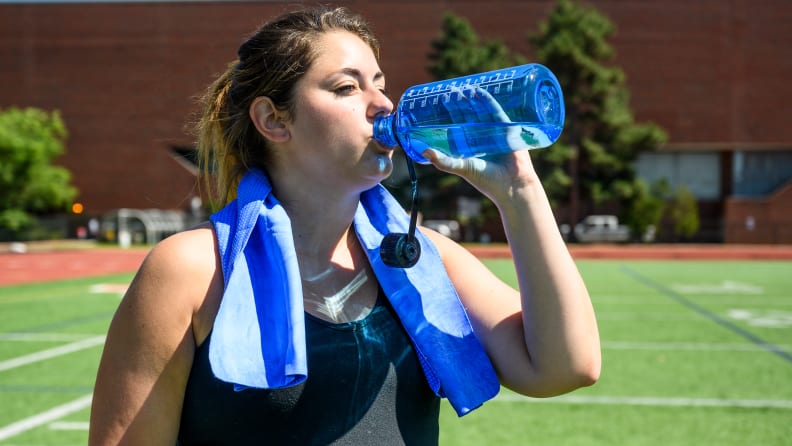
Does a cooling towel work any better for chilling down after a hard workout than sipping a frosty beverage? Hard to say.
The short answer: Yes. But not any better than any other dampened gym towel would (and did, in our lab tests). And not nearly as well as some of their claims would like you to believe.
The workout tests I washed the towels before using (per the instructions, which insist on it), in cold water. When damp right out of the washer, they did feel cool to the touch, though I don’t think significantly more than any of the other laundry I pulled out of the load.
I brought them the gym or beach for use between sets and after an open water swim. All three provided some relief, but again, no more than any other moist fabric would. The PVA Chill Pal, which was the one that came to the beach with me, emerged feeling quite warm from the plastic bag I’d packed it in (as it needs to be wet to work, I’d doused it with clear water at home), but it impressed me with how it cooled significantly to the touch once exposed to the air. All three warmed up rather quickly, though, when pressed against hot skin.
I also used each of the three towels during and after a training run. I found all to be a nuisance to wear while pounding the pavement (as I would any longish gym towel looped around my neck), with the ends flopping about unless well tucked under my tank-top straps. But with the towels pressed to my body and no way for air to circulate—and therefore less evaporation happening between towel and skin—I didn’t notice them making me feel any cooler as I tooled around my neighborhood in the summer sun. What’s more, because I’d wet the material to “activate” the cooling effect, none of the towels absorbed much of my sweat when used for blotting, which I quickly realized is far more satisfying than the sensation of a damp (and rapidly drying) cloth pressed against sweaty skin.
The lab tests
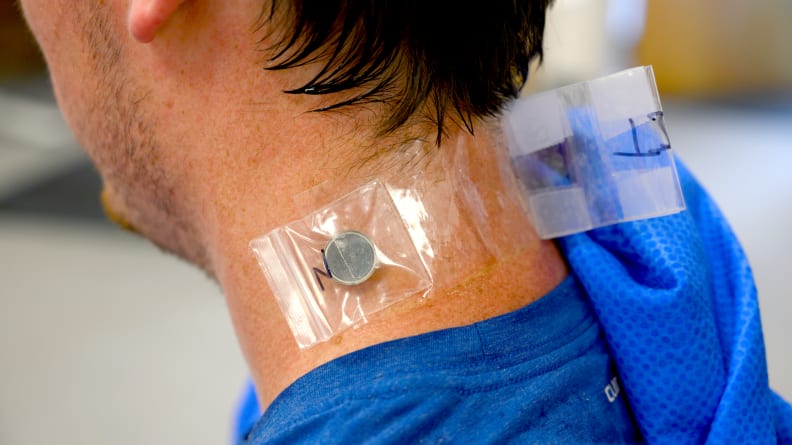
We attached temperature sensors to testers' skin to record whether the towels actually cooled things down.
In the name of science, I shipped the three towels, plus two controls (a regular terry cloth gym towel and a bamboo microfiber gym towel from menswear brand Rhone) to Julia MacDougall, Reviewed’s senior scientist. When it came time to test the temperature-lowering ability of these towels, she pulled out all the stops.
The first round of lab tests involved wetting the towels with hot water on one end and cold water on the other end. After laying the towels out flat, Julia placed small wireless temperature readers on each side of the towel to try to capture any temperature changes in the towel over time. Unfortunately, the tests were inconclusive—the temperature readers just recorded the air temperature of the room and they didn’t seem to register any temperature differences beyond the initial application of the hot or cold water.
Heading back to the drawing board, Julia decided to test the towels on actual human beings. Three of our colleagues volunteered to get overheated and sweaty by running for 30 minutes. After the run, each person kept a towel on either side of his or her neck for 15 minutes: one cooling towel and one regular towel, both of which had been doused in cold water and rung out. She then placed the wireless temperature readers in between the person’s neck and the towels.
Both anecdotally and data-wise—surprise!—the bamboo microfiber gym towel did the best job of actually cooling the skin. (A worse surprise: It’s no longer available for sale.) Most of the test runs showed that the side of the person’s neck that had this towel pressed against it was noticeably cooler than the side with the regular towel.
Julia’s temperature readers recorded some lower temps with some of the cooling towels as well, but inconsistently. In fact, some of the temperature data from those registered as warmer than the side of the neck with the normal towel!
Julia explains: “One possibility is that for the more rigid towels, when they’re folded up, they can’t really curve to fit the contours of a person’s neck. Instead, by sitting above the neck, these towels actually trapped the sweat and humid air and our temperature readers recorded the resulting higher temperatures,” she says. Relatedly, “perhaps because many of the towels except for the [microfiber] lack the breathability of a normal cotton towel, their ability to vent the humid and sweaty conditions coming from the runner’s skin is reduced."
Should you get a cooling towel?
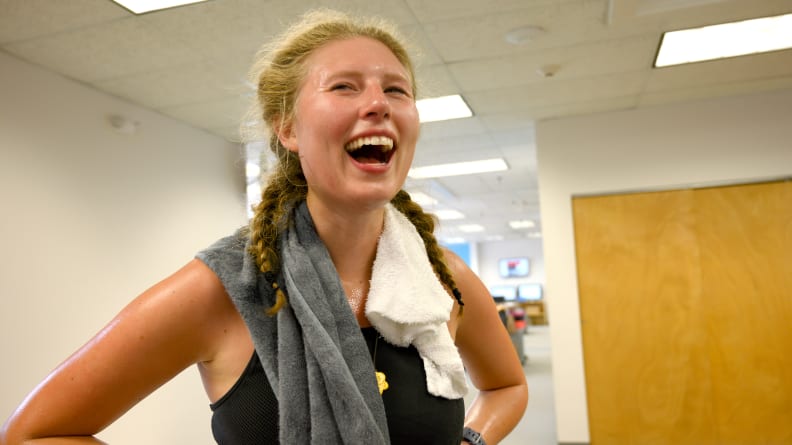
Testers wore a cooling towel and a control cotton towel on their necks post workout while the temperature readers did their thing.
Given my experience and the results of our lab testing, cooling towels simply aren’t all they’re cracked up to be, despite the rave reviews of the Amazon reviewers who’ve bought them. “We don’t doubt that you can feel a cooling effect from all of the cooling towels we tested,” Julia concludes. “But we couldn’t measure that cooling in real time.”
What’s more, the plastic-y feel of the Chill Pal and the Frogg Toggs towels is an acquired taste, and one that none of our testers (myself included) acquired. “They were too stiff and hard to comfortably use after a run,” Courtney summarizes.
The only benefit testers felt in using a cooling towel instead of a regular terry-cloth one is that they were able to be wrung out better. “The cooling towels didn't get my shirt soaking wet,” TJ says. “[Using one] could be a good solution, especially if you have to get into a car or go back to work post-workout and don't want to get your seat all wet.”
The Chill Pal PVA Cooling Towel is available on Amazon for $11.97
The Frogg Toggs Chilly Pad Cooling Towel is available on Amazon for $8.94
